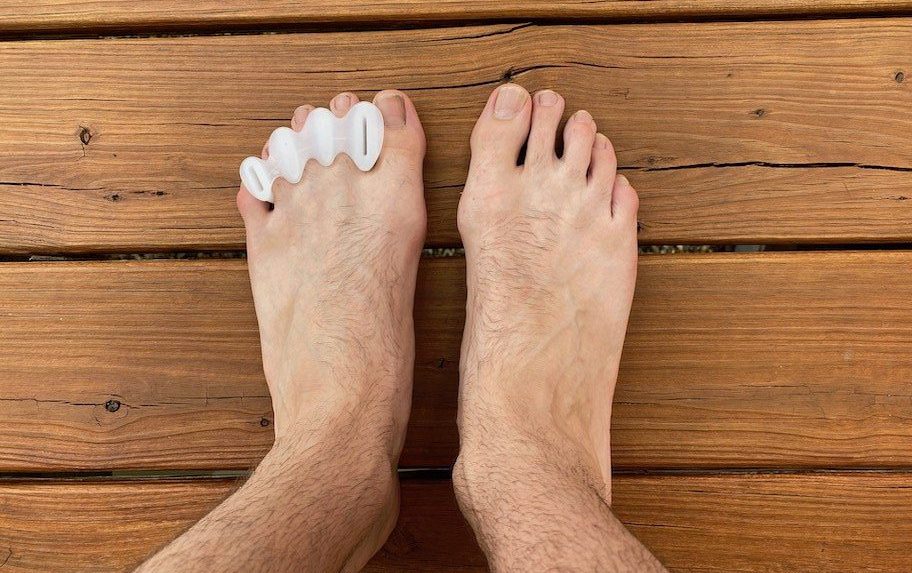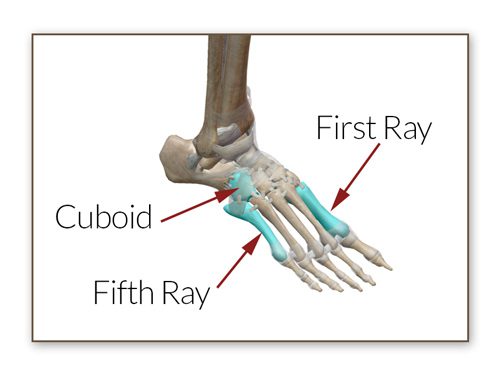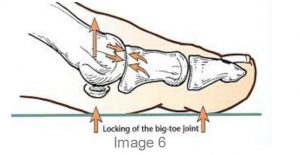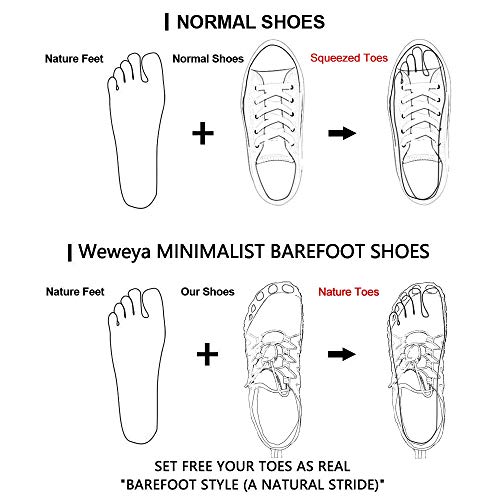This week I did a vlog continuing in the theme of foot and ankle stability. To truly have a stable foot and ankle you must have a stable hip. The one exercise that I think gives you the most bang for your buck for hip stability is called The Hip Airplane. In this vlog, go over all the different ways to regress and progress this exercise to match your current skill level. Make sure to check it out!
Foot Mobilization Vlog
This blog is in video format. In the video I go over three important mobilizations of the foot. In my previous blog I discussed the importance of stability of the foot and ankle. You cannot have proper stability in your feet and ankles unless you have proper Mobility as well. If you are lacking stability in your ankles try these foot mobilizations and see if your stability improves.

I've gotten a lot of feedback and questions about the feet in the last few weeks after I published my blogs on bunions. This week I wanted to talk about why our feet are so important for our overall health and wellness.
Our feet are literally our foundation.
They are the first thing that contacts the floor once we stand up and become weight-bearing. In addition to housing and maintaining the function of the muscles and joints that exist in our feet, there are also lots of nerves in our feet. Those nerves carry information to our brain and spinal cord that informs our brains about the structures of the environment around us.
If we are walking uphill, the nerves in the feet sense the stretch in the bottom of the feet from the hill and they begin to turn on the muscles that we use to raise our leg as we walk up the hill. If we are on uneven terrain, the nerves in the feet send messages to the brain and spinal cord that activate the stabilizing muscles in our hips that help to support us on uneven surfaces.
This is part of what makes the feet so important. As they encounter the ground around us, our feet send messages that help the rest of our body prepare for the environment that we are in. This is one of the reasons for the minimalist and barefoot trend emerging over the last 5 to 10 years. Much of our common footwear these days does not allow our feet to flex and bend and splay with the changes in our terrain. That limits the information coming in from the feet and makes our ankle, hip, and core muscles less able to anticipate the needs of the body.
Tightness in the feet and ankles can also limit this information. That is why foot and ankle mobility is so important. If your foot and ankle cannot bend and twist and splay, then those messages never get to the brain and spinal cord.
So this means there are two needs that our foot and ankle have to properly get our body ready to move.
In this blog, I will discuss how to make sure your foot and ankle get good exposure to the environment.
In my next blog, I will be going over how to make sure your foot and ankle have proper mobility.
The best way to make sure that your foot is able to sense the ground and the environment around you is to make sure that your footwear allows this to occur. This is why I recommend minimalist shoes for most feet.
When Minimalist shoes first came out, cushioning was thought to be bad, no matter what. And in my opinion, this is what caused many people to dislike minimalist shoes. Let's face it: If you are a marathon runner -- you're going to need some cushion. Thankfully, now minimalist shoes come with a wide range of features.
My recommendations for good Minimalist shoes for everyday use are the New Balance Minimus line, the Merrell vapor gloves, and splay shoes. These are really good shoes for going to work, working out, or walking or hiking. The links to find these shoes are below.
If you're looking for good Minimalist shoes for endurance sports like running, trail running, or long distance walking, I recommend Altra shoes and Topos. These are great foot-shaped shoes with no build-up in the heel and with good cushioning. The links to these shoes are below.
These shoes are a great first step to getting the most out of your foundation.
Additionally - and actually very importantly: I also recommend just walking barefoot in the grass as often as you can. Wake those feet up! Your body will thank you!
And remember, you can always check with me here at Movement Laboratory about any of your foot questions ---we're here at 918.300.4084 or dr.john@movlabtulsa.com.
Be sure to watch for my next blog about ensuring MOBILITY of your feet. It's a critical issue - and there are things you can do to increase your ability to move well on your feet!


Last week I went over the main things you need to know about bunions and how they affect you. This week we're going to cover what you can do to stop a bunion's progression or even reverse it!
So what does a strong foot look like? Well it's not what you think. We don't really need our feet to be especially strong - what we need is just for them to be active at the right times. Many people who have flat feet or bunions don't actually have weak foot muscles. It's more likely that they have weak hip and ankle muscles which then don't allow the foot muscles to activate like they should.
In order to have good strong feet, we have to be strong in other areas of the body as well. In this blog, I'm going to cover how to strengthen the feet, the ankles, and the hips. If you are strong in these three areas, that will stop the progression of bunions and sometimes even reverse them.
In order to strengthen the feet, we must first understand a little bit about how the foot works. The foot is constructed like a tripod. The three points of the tripod are:
A strong foot will keep these three points in contact with the ground as often as possible.
Our foot goes through a lot of different movements as we walk, climb, run and jump. The foot is meant to pronate, supinate, and be neutral and all the points in between. The issues that we have that lead to bunions tend to make our feet hang out most of the time in pronation. So in order to strengthen the foot, we need to strengthen the muscles that keep us either in neutral or supination.
The best exercise to help this is what's called the short foot exercise. When our foot pronates, it lengthens and becomes more wide. The short foot exercise helps to activate the muscles that do the opposite action. The video below shows how to do the exercise. I recommend doing just this exercise alone for two weeks. Usually doing about two to three sets of 10 at a time.
Once you feel confident doing this exercise, then you can start applying it to a lot of different situations.
Doing this will help to transition the short foot from being just an exercise that you do to something you can be practicing during your day in real world situations.
The next exercise to help strengthen your feet is called the Vele lean. This exercise is shown in the video below and it really helps to strengthen the muscles of the feet. The short foot practice combined with this exercise is a great one-two punch for strong feet!
The foot does not work alone. The hips and the ankles help to support the motions of the foot. You could have the strongest feet in the world, but if you have weak hips and ankles, your foot will still get in bad positions.
The first exercise to help strengthen your ankles is called the tibialis posterior raise. The tibialis posterior muscle is one of the prime supinators of the foot. If your foot over-pronates or pronates too fast, it means the tibialis posterior is not strong enough to resist that. The exercise is shown in the video below. I recommend doing three sets of 10 everyday.
Once you've helped to strengthen your tibialis posterior, it's time to work on the stability of the ankle. In order to do that, you have to challenge the ankle in a lot of different directions. The best exercise to do this is called toe reaches. The video below demonstrates this exercise. The key here is that you'll be standing on one leg and reaching the other leg out in different directions. Be sure that you try to keep the foot that is on the ground as still as possible. It is going to move a little bit. but you don't want it to be wobbling all over the place.
As I mentioned above, if your hips are not strong, your feet are put at a disadvantage. Bunions develop from feet that remain in pronation for too long. The hip muscles that help to bring the foot out of pronation are the external rotators of the hip, primarily the gluteus, medius, maximus, and piriformis.
A great first exercise to start strengthening these muscles is called a glute bridge with abduction. The exercise is shown in the video below. I usually have people start with two sets of 10 and slowly work up to three sets of 12.
The next exercise is a great one because it can work on almost all of those muscles at once. It is called a lateral band walk. The video is shown below. Pay special attention to the placement of the band. By placing the band around the foot instead of the ankles like this exercise is normally done, it really works on those external rotators of the hip.
The final exercise really works on increasing control of the hip rotators. This exercise is called the hip airplane. When you start this exercise, you'll want to be close to a wall or a table that you can use for balance. After a couple of weeks doing the exercise, you need to start taking your hand off of whatever structure you're using for balance, and starting to try to balance on your own. Eventually you want to be able to do this exercise without using anything for balance.
Special/Simple Device to Help Stop/Correct Bunions
One final recommendation for stopping bunions or reversing them is actually a device to wear on your feet. This device is called correct toes. This simple silicone piece can be worn at all times even with socks and helps to maintain the placement of the toes which can help the deformation of the bunion. I recommend this for all bunions! They can be purchased here: https://www.correcttoes.com/shop/correct-toes/correct-toes.html?gclid=CjwKCAjwrqqSBhBbEiwAlQeqGrrmlzau3uTeVCbstoyU37gGT-kNmsutB_DoQC7TX_qjHgJxF1TZVhoCHBgQAvD_BwE

_________________________________________________
So there you have it. If you have a bunion, or if you're wanting to make sure you don't develop a bunion, this program includes my recommendations to make sure you know what to do to help ensure those results! And if you are looking for more help with your feet, give us a call at Movement Laboratory at 918-300-4084 and schedule an appointment today. We help get people moving better and out of pain fast!


We've all seen them - some of you may be starting to notice them on yourselves, some of you may be dealing with them for years. That's right - today, we're talking about bunions!
Oh bunions! According to some, one of the ugliest deformities that can happen to our feet. In today's blog, I'm going to talk about what bunions are, and why they happen. Next week, I'll address ideas for things we can do to prevent bunions and what we can do to help improve a bunion that's already in progress.

In order to talk about bunions, we're going to have to talk about some anatomy first. The central driver of bunions is a bone in our foot called the first ray or first metatarsal. This is the long bone that goes from your ankle to your big toe.
The first ray is extremely important in our everyday movements. It bears a ton of weight whenever we push off of our feet as we're stepping forward in a process called toe-off. The first ray's movement is a big part of pronation and supination of the foot which is what allows our foot to absorb impact as we walk, run, jump, and climb.
When you step forward while walking, your heel is the first thing that strikes the ground. When your heel strikes the ground, your first ray is pointed downwards. As the foot rolls forward from the heel and weight gets transferred into the rest of the foot, your foot transitions from supination to pronation. This causes the weight to roll up the outside of the foot across the balls of the foot, to the ball of the big toe, then eventually the weight rolls off the big toe as we step forward.

During this process, the first ray starts out pointed downwards or flexed, and slowly starts to move upwards as our foot pronates and flattens out while our foot gets ready to toe off as we step forward. This is part of the process of pronation. Many people are under the impression that pronation is bad. However this couldn't be further from the truth. If our foot could not pronate, we would not be able to walk or run.
Pronation is not a bad thing - overpronation or extremely rapid pronation is what is bad for our feet. The foot and ankle are supposed to slowly pronate as the weight shifts from the heel to the big toe. But this process is supposed to be slow and gradual. Weakness in our foot and ankle muscles will sometimes allow this process to happen much faster than it's supposed to and that's where problems occur with pronation.
When our heel lands as we step forward, our foot is in a supinated position. When the foot is supinated, it is relatively skinny. As the heel strikes and our weight shifts forward into the balls of the feet, our foot flattens out and becomes wider. As this happens, the first ray moves from being at a downward angle upwards and becomes more of a flat angle; it also spreads away from the other bones of the foot as the foot widens.

One part of our anatomy that is very important for this process is a muscle called the adductor hallucis. As the first ray widens and spreads out, and moves towards the other foot, the adductor hallucis helps to slow the inward movement of the first ray, helping pull it back into position as we toe off and the foot moves back towards supination as it steps forward.
Bunions develop when the muscles of the foot and ankle cannot slow the rate of pronation and the foot flattens out too much, making it unable to return to its normal width at the appropriate time in the step process. When the foot remains in this widened position for too long, the adductor hallucis begins to weaken and lengthen. This allows the first ray to move inwards. Due to the way the other foot muscles are attached to the big toe, the big toe will stay in its previous position. So as the first ray moves inwards with the big toe staying where it is, the foot develops the angular deformity known as the bunion.
These are the basic biomechanical, internal body issues that can lead to bunion formation. However, there are also other external factors that can worsen this process. One of the most common external factors that make the formation of bunions more likely to occur is our footwear.
We have decided as a culture that footwear is more attractive when it's not actually shaped like our feet.

Humans are weird! We have decided as a culture that footwear is more attractive when it's not actually shaped like our feet. Most shoes get skinnier towards the toe. But that's not how our feet are shaped. This skinniness in the toe box leads to the 1st and 2nd toes, and the 4th and 5th toes being pushed in towards the third toe.
So basically, a high percentage of our footwear encourages bunion formation. If you add together all of the internal biomechanical feet factors and the external issue of inappropriate footwear, our sedentary lifestyles that lead to weakness in our hip and ankle muscles, our lack of time spent barefoot in order to strengthen the muscles of our feet, and the general shape of our footwear, all of this is the perfect storm for bunion formation.
_______________________________________________
Ah, Bunions!
So there you have it. That is a simple explanation of what a bunion is and how it forms. In my next blog. I'll discuss what you can do to try to prevent bunions, along with some ways you can choose to try to stop the progression and even reverse the progression if you're already dealing with a bunion.
So make sure to stay tuned for next week!
_______________________________________________
And as always, if you're dealing with bunions or other foot-related pain, or pain anywhere else in your body, we here at Movement Laboratory are here to help. You don't have to just deal with pain and let it limit your life. Call us today at 918-300-4084, get an appointment scheduled, and let us help you quickly get out of pain and back to doing what you love!